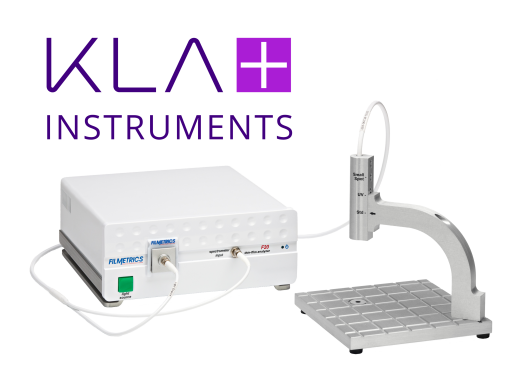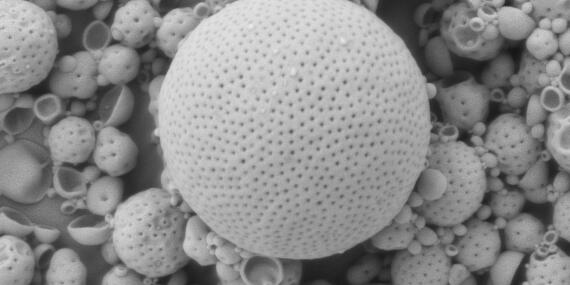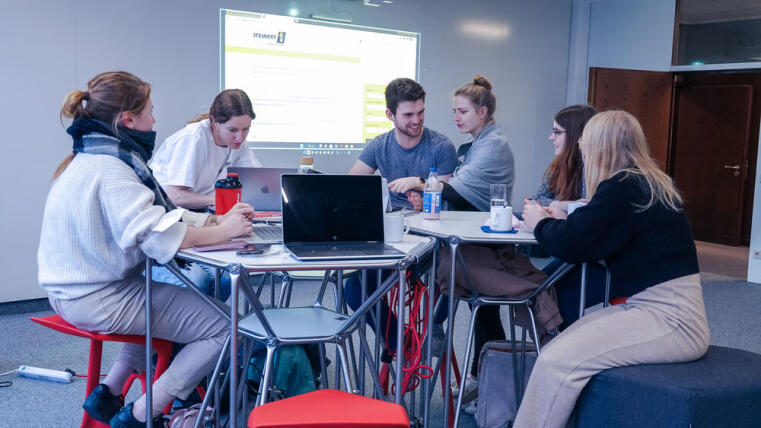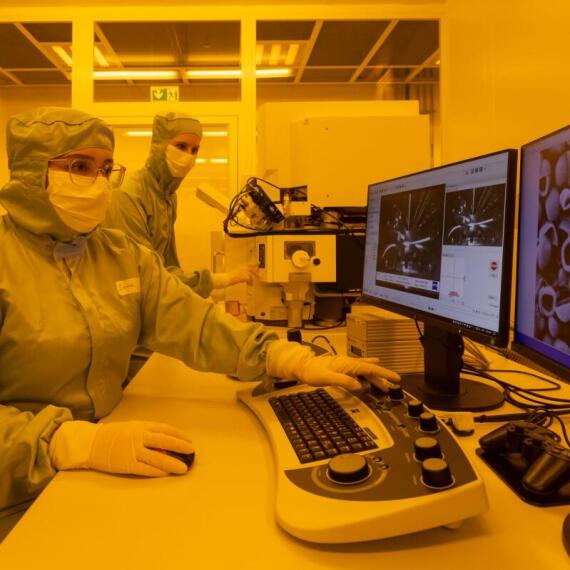
Physiker stellen weltweit kleinsten QR-Code her
Ein Team um den Physiker Prof. Dr. Carsten Schuck und den Studenten Lukas Schulte sowie die Doktoranden Tim Buskasper und David Lemli hat den weltweit kleinsten QR-Code hergestellt. Mit einer Größe von 5,38 Quadratmikrometern ist er rund 20 Mal kleiner als der bisherige Weltrekord einer Forschungsgruppe aus Singapur und etwa siebenmal kleiner als eine menschliche rote Blutzelle. Die Arbeitsgruppe produzierte das Fabrikat mithilfe eines Elektronenstrahllithographie-Gerätes in den Reinräumen der „Münster Nanofabrication Facility“ (MNF). Hier arbeiten Forscherinnen und Forscher verschiedener Fachrichtungen sowie Masterstudierende im Praktikum „Grundlagen der Nanofabrikation“. „Die technische Ausstattung in der MNF ist hochmodern und kommt neben unseren Forschungsaktivitäten in der Quantentechnologie unseren Studierenden in innovativen Lehrformaten zugute, die in Praktika nanoskalige QR-Codes herstellen – wenn auch etwas größer als bei unserem Rekordversuch“, unterstreicht Carsten Schuck.
University News
AG Schuck / Department for Quantum Technology










































